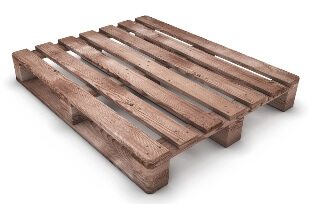Not all pallets are created equal or for the same commodity as you will find in this informative post about the different types and sizes of pallets used in the freight shipping industry.
When asking for a freight quote many times you will be asked for the dimensions of the pallet.
Depending on the commodity being shipped it would be wise to know which pallet is best suited for your particular shipment. What amount of weight will the pallet be supporting? Will the pallet be put on racking system or just stored on the floor of a warehouse? Each type of pallet has a use or purpose and has respective pros and cons depending what their use will be once the goods arrive to their destination. Pallets come in all various sizes and can be custom made for the shipper’s particular industry. Read below for a comprehensive breakdown of the “not so” common pallet.
Wooden pallets have been the standard for over 50 years. Shippers use pallets to ship their freight for many reasons including the reduction of pilferage and can also virtually eliminate freight claims. In the past shippers of LTL or truckload freight had very little options as to what size pallet and material was available. As time passed and innovations in pallet design began emerging, everything from the size and weight of the pallet to the materials being used to manufacture them has changed. Pallets have come a long way to suit each industry best, but to date in North America no universally accepted pallet size has been determined but rather accepted.
The most common size pallet accepted in North America is the 48 x 40 pallet, which was created by the GMA, also known as the Grocer’s Manufacturer Association. By using this size pallet the wasted floor space in a 40ft container is kept to fewer than 4%. These pallets are also called stringer pallets and are the most common pallet in circulation today. They earn their name from their obvious design. The “stringer” is also known as the length of the pallet and is always the first dimension given when asking for a freight quote.
The next dimension given is the deck board or width of the pallet. These types of pallets are heavily used not only for shipping groceries but many other goods. Stringer pallets most often come in 2 way entry but can be made into a 4 way entry by notching out two spaces for the forks along the stringer board.
The other type of pallet is known as a block pallet; these are essentially the same as a stringer pallet but are generally stronger due to the fact that they contain wood blocks sandwiched between the top and bottom deck of the pallet. Block pallets are for heavy duty use and would be ideal for shipping tile.
Many people incorrectly think that a pallet and a skid are one and the same but there is a difference. The difference being a skid is a stringer pallet without the bottom deck board.
With these tips you should have a safe and pleasant experience using a freight service company such as Freight-Specialist. We recommend that you consult with us prior to having your shipment scheduled for pickup if you have any doubts or concerns.






